13 Indian Dance Forms – From Classical Feet To Bollywood Beat
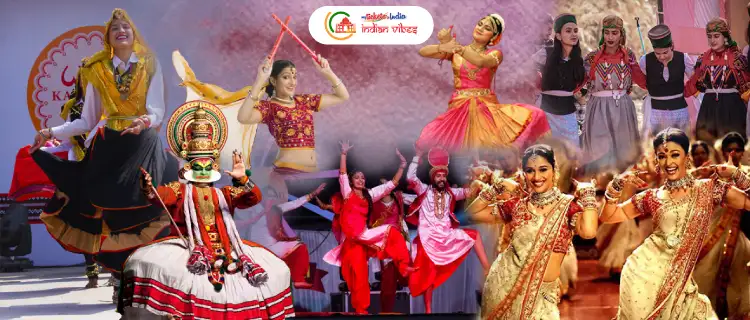
Life is better when you dance. Indeed, it is!
Dance is a way to show your feelings through movements and music. It’s been around since people first existed and has changed a lot over time. Dance is often seen as a way to celebrate and express happiness. Some people do it as an art, some because they love it, and some just for fun. Indian dance comes in many different dance forms of India, just like our country’s diverse culture. Each region of India has its own unique dances that reflect its history, traditions, and beliefs. Even though these dances are ancient, they’re still loved by people worldwide.
Here, we’ll give you a quick dancing name list explaining the different types of Indian dances, from folk dances of India, and classical dances of India with names to Bollywood Indian style.
What Is The History Of Indian Dance?
Dance for India is like worship. There are two main Indian forms of dance: Classical Dance and Folk Dance. Both of these dance styles are closely tied to religion. People often dance as a way to show their devotion to their gods.
All classical dances are based on something called the Fifth Veda, which is the Natya Shastra. We don’t know exactly when this text was written, but according to myths, Sage Bharata wrote it down after Lord Brahma asked him to.
The Natya Shastra
The Natya Shastra is seen as a holy book for all types of performing arts. According to the Natya Shastra, there are three main types of art forms:
- Nritta – Nritta is all about body movements matching the beat of songs. It doesn’t include using facial expressions to show feelings.
- Nritya – Nritya combines both body movements and facial expressions. It includes showing emotions and feelings through the face while dancing.
- Natya – Natya includes using dialogues along with music and dance. It’s like telling a story dramatically through acting, music, and dance.
नाथाथ शास्त्रं नाथाथ शिल्पं न स विद्या I
न स कला न असौयोग्यो नथतः कर्म ॥
यतः नाट्य न दृष्यथे I
‘There is no shastra, no
sculpting, no knowledge, no art, no yoga and no
action that cannot be seen in Natya.’
13 Famous Indian Dance Forms | Enjoy Dancing In Indian Style
‘Take more chances, dance more dances.‘
India dance styles are mainly split into two groups: Classical dance & Folk dance (Nowadays, Bollywood Indian dance is gaining fame all over the world). But, no matter which group they belong to, most forms of classical Indian dancing are linked to religion in some manner. Here are just a few of the many types of dance in India:
1. Bharatanatyam
Bharatanatyam is an ancient type of classical from Tamil Nadu, India. It goes way back to the Natyashastra, a really old book about theatre written by a legendary priest called Bharata. In the beginning, it was performed by women in temples and mostly told stories from Hindu religion. It wasn’t until the 20th century that people started performing it on public stages.
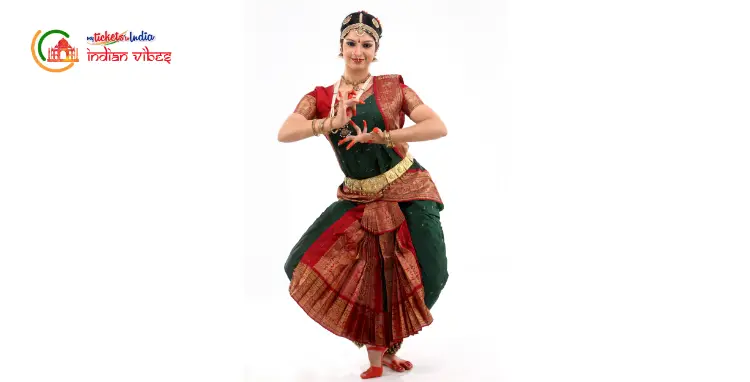
In this type of Indian dance, you often see bent legs and rhythmic foot movements. Dancers also use their hands to make special gestures that tell stories.
2. Kathak Dance
Kathak is one of the most popular Indian dance styles from northern India (like Uttar Pradesh, Madhya Pradesh, and Rajasthan) that often expresses feelings of love. Both men and women perform it. They do beautiful footwork and smooth spins that you can hear because of the bells (Ghungroos) on their ankles. They also make special movements with their hands and body, kind of like how we talk with our hands.
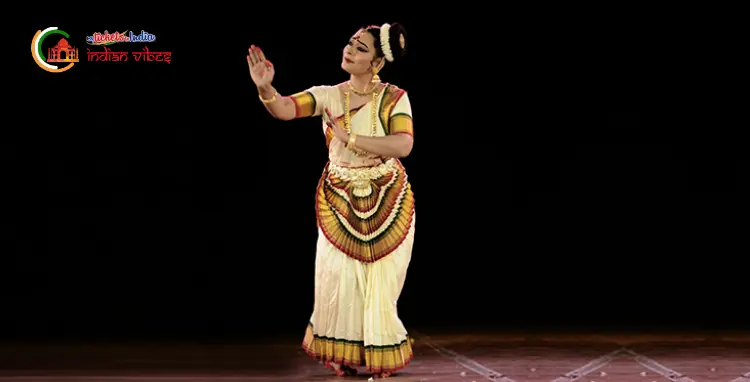
Kathak started with storytellers called Kathakas (stories from the revered Hindu books like Ramayana and Mahabharata). They would mix dance, singing, and acting. At first, it was danced in temples, but later on, it was performed in royal palaces too. To explore more about South India, visit the best places in Kerala and enjoy!
3. Odissi Dance
Odissi, a famous name of Indian dance comes from Orissa, is originally started in the temples of Odisha by the ‘maharis’. Being one of the Indian traditional dance styles, it’s mostly performed by women, and the poses they do look like the ones you see in sculptures in temples. According to things found by archaeologists, Odissi might be the oldest Indian classical dance that’s still around today.
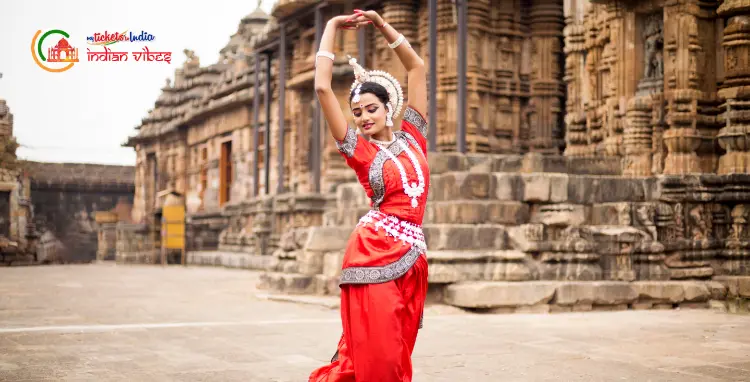
Odissi dancers told stories about the love between Radha and Krishna and other stories from the Vaishnava tradition. It’s a really detailed and expressive Hindu dance, with more than fifty hand gestures, called Mudras, that are often used. Also, explore the beautiful beaches of Odisha and enjoy!
4. Manipuri Dance
From the pretty valleys of Manipur comes their traditional dance called Manipuri, which is truly amazing. What’s special about it is how the dancers use gentle movements and expressions. They don’t look directly at the audience during the dance. There are two types of Manipuri dance: Jagoi, which is soft and gentle, and Cholom, which is more energetic and lively. It’s based on the traditional customs and ceremonies of that place and often shows stories about the god Krishna.
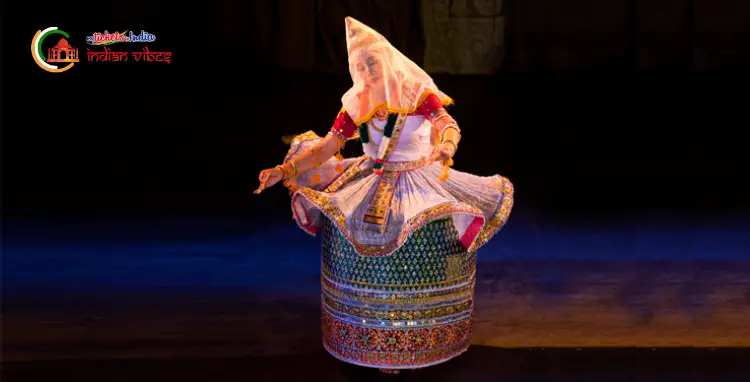
Women in the dance often have very graceful arm and hand movements, while men usually have stronger moves. Sometimes when people do Manipuri, they also sing stories or chant along with the dance.
5. Kuchipudi Dance
Being one of the famous Hindu dances from India, Kuchipudi began during the Bhakti Movement in the 7th Century AD in what is now Andhra Pradesh. It combines all three types mentioned in the Natyashastra – Nritta, Nritya, and Natya. This Hindu dance is like a very expressive play where the dancer acts out many different characters on stage. It is one of the unique or different forms of dance because it needs skills in both dancing and singing.
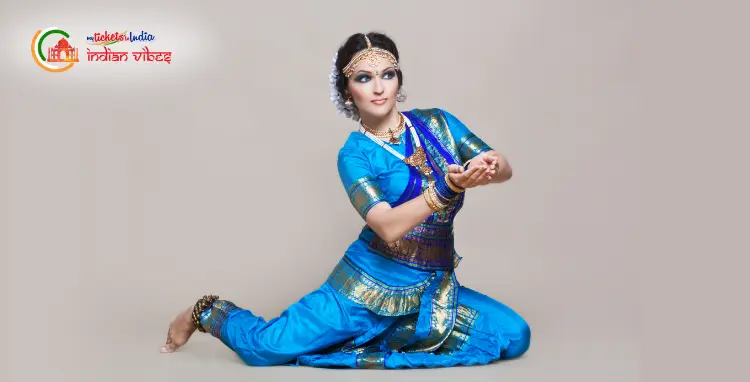
Kuchipudi has lots of rituals, like singing and dancing to start, sprinkling holy water, burning incense, and calling on goddesses. In the past, men used to do all the roles, even the female ones, but now mostly women perform it.
6. Chhau Dance
Chhau dance, one of the traditional Indian dancing styles, is from Eastern India, in places like Orissa, Jharkhand, and West Bengal. It combines martial arts, temple ceremonies, and local folk performances. The stories it tells come from revered Hindu books like Mahabharata and Ramayana, as well as traditional tales and legends from the area. They use drums and other local instruments to make music.
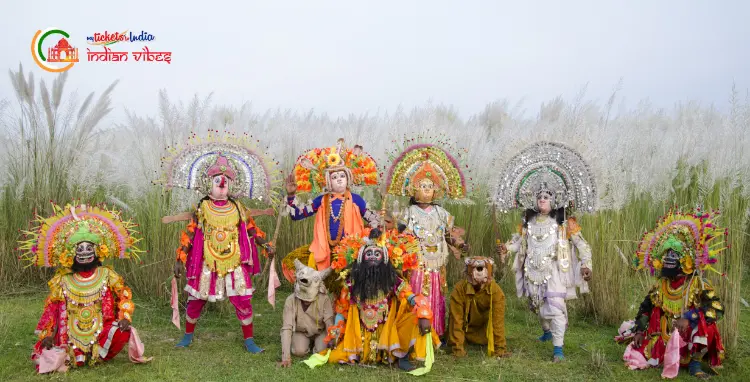
Chhau dance is often part of festivals and special events in the region, like Chaitra Parva in April, which celebrates spring and the start of the harvest. They use instruments like Mohuri, Turi-Bheri, Shehnai, Dhol, Dhumsa, Nagada, Chadchadi, and Jhanj to make the music for the Chhau dance.
7. Bhangra & Giddha – Folk Dance of Punjab
Originally, Bhangra was a way for farmers to celebrate a good harvest. This famous Indian dance name is named after a Punjabi drink called “bhang,” which is made from cannabis and often enjoyed during festivals. It includes things like lively foot movements, clapping, and the beat of a traditional drum called the dhol. As Punjabi people moved around the world, Bhangra became famous globally and mixed with modern music and dances.
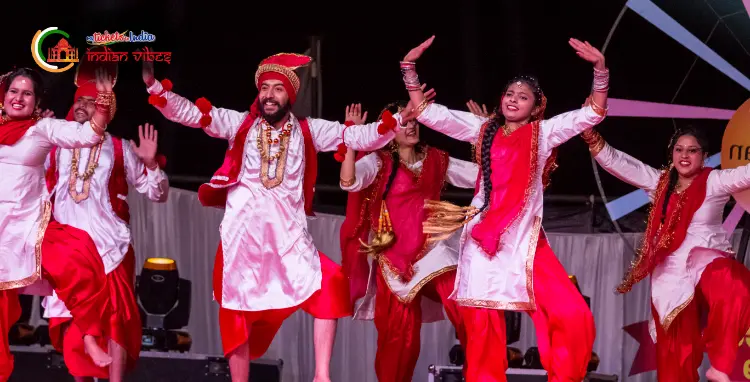
When we talk about Bhangra, which is mostly done by men, we have to talk about Giddha too. Giddha is like the female version of Bhangra which is known for its circular movements, clapping, and energetic footwork. While dancing, women also sing traditional Punjabi folk songs called ‘Bolis,’ which tell stories about love, daily life, and cultural things.
Insight – In the late 20th century, Bhangra mixed with Western music, especially through the British-Asian music scene. This mix created a new type of music called “Bhangra pop”.
8. Khoria, Phag & Dhamaal – Haryanvi Folk Dance
In Haryana, farming is how most people earn a living. Farmers are busy all year round working in their fields and don’t get much time to relax or celebrate. But when they finish sowing seeds and are waiting for the harvest, they do a dance called the Phag Dance and Khoria Dance. They wear traditional clothes like flowy skirts with beautiful golden embroidery, brightly colored veils called Dupattas, and rustic jewelry. During the dance, they twirl around, making their skirts spin faster and keeping up with the rhythm.
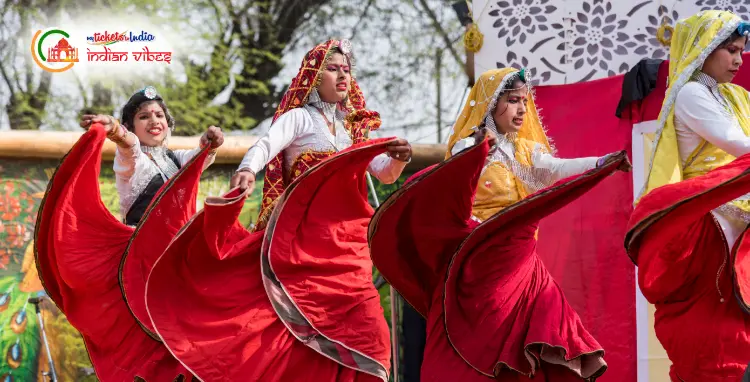
Also, the Ahir community in Haryana performs the Dhamal dance, which has its roots in ancient times, dating back to the Mahabharat era. The male dancers form a semicircle and sometimes bow their heads as a sign of respect to Lord Ganesh, goddess Bhavnani, and the three Hindu gods: Lord Brahma, Lord Vishnu, and Lord Mahesh.
9. Ghhomar – Rajasthani Folk Dance
Recently, a Bollywood dance scene called “Ghoomar” from the movie ‘Padmavat’ starring Deepika Padukone got a lot of attention in India. It showed women dancing gracefully in long, decorated skirts called Ghagras. They covered their heads and faces with a scarf called a Dupatta. This dance, originally from Rajasthan, is usually done by the Bhi tribe to honor Goddess Saraswati. Over time, people from other communities in Rajasthan started doing it too. It’s often performed by brides after they get married.
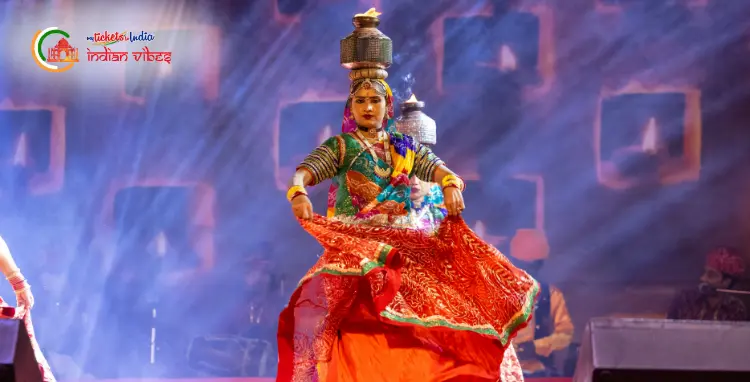
In Ghoomar, dancers spin gracefully in a big circle, doing spins called pirouettes. The word “Ghoomna” perfectly describes how the dancers spin around, which is where the name “Ghoomar” comes from.
10. Nati Dance- Himachali Folk Dance
The Nati dance, a popular folk dance form of Himachal Pradesh, is performed in various regions like Sirmaur, Kullu, Shiv Badar, and Shimla with different versions. It’s a happy dance done during weddings and the start of harvest season. Both men and women join in and wear colorful clothes. It’s not just dancing; it’s also storytelling. For instance, in Kullu, they tell stories about Hindu gods like Krishna and the Gopis.
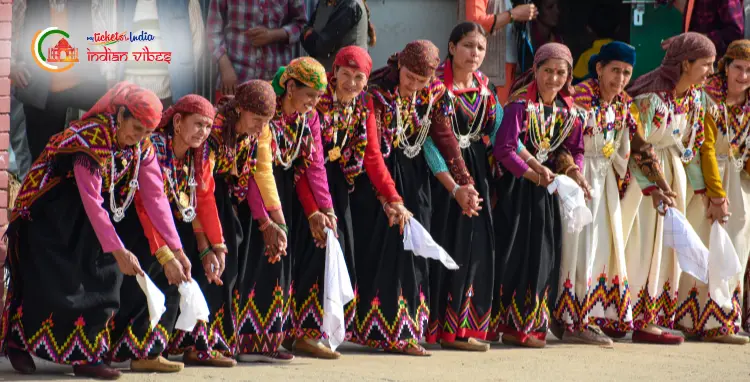
Nati is a must at any event in Himachal Pradesh. It even made it into the Guinness Book of World Records as the biggest folk dance with the most people dancing. The dance is so fun and lively that it’s hard for anyone watching not to join in.
11. Garba – Gujarati Folk Dance
The word “Garba” comes from the Sanskrit word “Garbha,” which means womb. Traditionally, people do this dance by forming a circle around a clay lantern with a light inside called Garbha Deep. It represents the growing life inside a mother’s womb. Sometimes, Garba is also done around a picture of Goddess Durga, who is like a mother to everyone. This dance happens during Navratri to honor the Goddess.
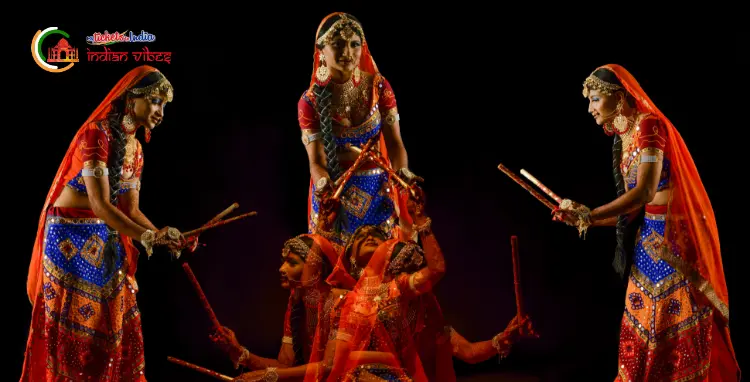
Modern Garba is a mix of traditional Garba and Dandiya Raas, which was originally a men’s dance. Both men and women wear colorful clothes – women wear ‘Chaniya Choli,’ and men wear ‘Kediyu.’ Garba is a lively celebration with happy music and dancing.
12. Lavani – Maharashtrian Folk Dance
Lavani comes from the folk traditions of Maharashtra, especially in the countryside. The word ‘Lavani’ comes from ‘Lavanya,’ which means beauty. It started as a way to inspire soldiers and their families in the 18th and 19th centuries when Maharashtra was going through a lot of changes. Lavani became really popular during the time of the Peshwari Dynasty. Lavani is a lively dance done by women to the beat of an Indian drum called Dholak. They might also use other instruments like Manjeera, Tuntuni, Daf, and Harmonium – different types of music in India.
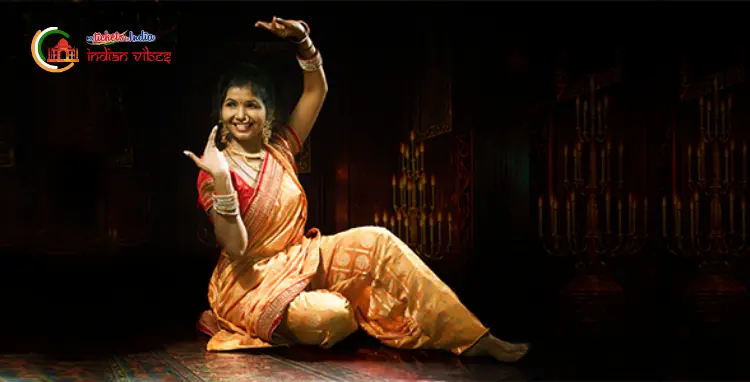
The dance is fast and energetic, and the dancers wear ankle bells called Ghungroo, which makes it even more lively. There are two types of Lavani: Nirguni Lavani, which talks about deep ideas, and Shringari Lavani, which is more about love and romance.
13. Indian Bollywood Dance Style
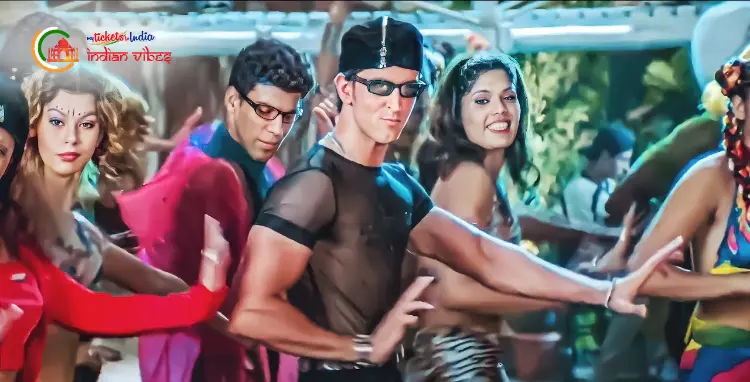
India has a dance history of more than 500 years. The Bollywood dance style is a mix of different dances in its original form. It’s full of energy and colors. Two popular types are Bhangra and Garba, which come from Gujarat, India. They mixed with other dances from different places to become the Bollywood style. Bollywood Dance is a mix of lots of styles like Bharatanatyam, Kathak, Bhangra, Jazz, Hip-hop, Arabic, and Western dance. It includes both dance moves and expressions.
Today’s Bollywood Dance takes bits from Indian classical dance and many other dances. Bollywood Dance Style is currently outshining all other dance styles in the world. So, let’s do some ‘Shava-Shava’!
What are you waiting for, guys? Put on your dancing shoes and dance your heart out! By exploring the dances of India, make the most out of Tourism in India and enjoy it to the fullest.
Tip for travelers – Apply for your Indian visa today to enjoy Indian dancing styles. Must know about the latest fee of Indian Visa for US citizens before applying.
Frequently Asked Questions
Q: How many classical dance forms in India?
A: Indian classical dance is originated from the Natya Shastra. According to experts, there are 8 classical dance in India. The Cultural Ministry of India added Chhau to this list, making it a total of 9 classical dance forms in India.
Q: What is Indian dancing called?
A: Different Indian Dance styles are Bharatanatyam (Tamil Nadu), Kathak (North, West, and Central India), Kathakali (Kerala), Kuchipudi (Andhra Pradesh), Odissi (Odisha), Manipuri (Manipur), Mohiniyattam (Kerala), Sattriya (Assam), and Chhau (Jharkhand, West Bengal and Odisha).
Q: What is the difference between Kathak vs Bharatanatyam?
A: Bharatanatyam needs flexibility, balance, and strength. It has tricky hand gestures, footwork, and poses that need lots of practice. On the other hand, Kathak needs stamina, rhythm, and speed.
Q: What are the famous dancers name in India?
A: The famous dancers of India are Birju Maharaj, Rukmini Devi Arundale, Shovana Narayan, Balasaraswati, Damayanti Joshi, Gopi Krishna, Vempati Chinna Satyam, Guru Bipin Singh, Kelucharan Mohapatra, Rohini Bhate, Prabhu Deva, and many more.
Get ready to discover the colorful world of Indian dance. Just get your nonstop flights from USA to India booked today! From the graceful moves of classical dance to the energetic Dhamaka beats of Bollywood, come along on this heartfelt experience through 13 different Indian dance styles.
We hope you find this piece informative and entertaining. For more such pieces, keep returning to IndianVibes – a sister portal to MyTicketsToIndia where we aim to connect Indians settled in USA to their homeland.
Speaking of MyTicketsToIndia, we deal in offering a range of incredible options on USA to India flights and back at the cheapest prices. Our team works tirelessly 24/7 to make sure you get the best services possible. So, be in touch with us now and dance in Indian style to the energetic beats.
About Renu Dahiya | View Posts
Renu Dahiya is a passionate writer who worships her profession. Her love for writing has encouraged her to pursue her career as a writer. Her friends call her a “travel worm” and always come to her to know some interesting traveling tips and destinations. Renu is a repository of knowledge about traveling who knows which place should be visited in which season. Oh yes, she is insanely in love with dancing too. Writer, traveler and dancer, a perfect combination! Without a doubt, she is a complete package.


Discuss this post ?